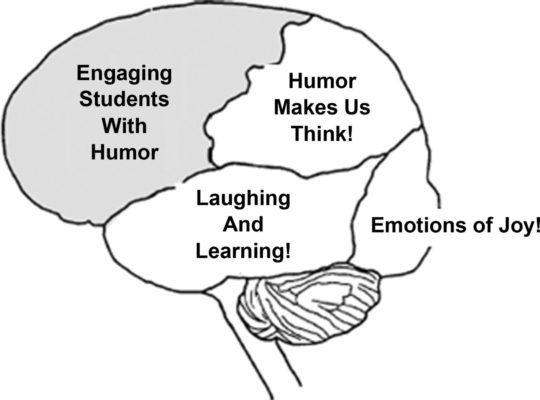When selecting or preparing humor for the online course, the educational purpose of the humor is the most important consideration. As a pedagogical device, humor can promote various objectives, such as to increase student interest and attention, facilitate the student-teacher relationship, provide students with a “mental break,” or promote the understanding and retention of a concept. In contrast to humorists, who gauge success by laughter, educators measure the effectiveness of humor by how it promotes learning. Although humor can be used to increase students’ overall enjoyment of the online experience, most of the humor incorporated into an online course should serve an instructional purpose. Otherwise, the course material and the instructor might be perceived as “fluff.”
Although humor can foster a positive online environment, it is not a substitute for traditional instruction. For example, when discussing dreams, a psychology instructor might joke that Martha Stewart dreams about designing trendy prison jumpsuits. Although the joke is easy to understand, it lacks conceptual relevance, so it is unlikely to help students better understand the psychology of dreams (see Mayer, 2001, for a related discussion). In fact, the humor may pacify confused students, leaving them less likely to seek clarification when necessary. Olson and Clough (2003) noted that a potential consequence of the “education as entertainment” movement is that students may develop the belief that learning is easy.
As noted previously, the goal of pedagogical humor is not laughter, and there are two important reasons why instructors should not seek or expect big laughs. First, powerful humor can often overshadow an instructional objective. For example, if an instructor uses a very funny story to illustrate a concept, students are likely to remember the humor and forget the principle. Second, the structure of the typical joke (i.e., a setup followed by a punch line) limits the funniness of pedagogical humor. If instructors use humor that is related directly to course material, then they lose the flexibility of exaggerating or distorting the setup (i.e., modifying the factual information) to maximize the laugh.
The educational context also changes humor expectations. Audiences expect comedians to be funny while students usually expect their instructors to be scholarly, serious, and often boring. The lower humor threshold for educational settings benefits instructors in two ways. First, simpler forms of humor that would “bomb” in a comedy venue, such as word-play (e.g., puns, oxymorons) and clever or witty observations, can be used successfully in online courses. Second, lowered humor expectations also mean that students will likely appreciate any attempt at humor, and perceive the instructor as striving to make the course more interesting.
Instructors should also be aware that the educational setting influences the selection of humorous material. Recognition of the audience is the most important principle of humor writing, and humorists always target humor to the specific interests and background of an audience. When preparing humor for the online course, instructors must be student-oriented and recognize that certain types of humor will not work, such as references to outdated cultural icons or discipline-specific jokes. Although educational humor is most successful when targeted to the students, the humor should also fit the course material and reflect the instructor’s personality.
Another factor dictating the selection of humorous material is the target of the humor (e.g., people, places, things, ideas). The target is often a victim because most humor is the result of ridiculing or attacking the target. As Sankey (1998) observed, “if there’s no corpse, there’s usually no joke” (p. 29). Fortunately, most instructors recognize that potentially offensive humor, such as sexist or racist jokes, is not appropriate (Perlman & McCann, 1998). The safest target is the instructor, because self-deprecating humor avoids offending or alienating others, and allows students to view the teacher as more “human.”
The careful selection of humor targets is especially critical for online courses. When potentially “risky” humor is used in the traditional classroom setting, the instructor’s delivery (e.g., nonverbal gestures, timing) can signal an impending joke and potentially minimize any negative reactions. In addition, students provide immediate feedback that indicates whether the humor was appropriate and should be used again. In the online classroom, humor cannot be embellished by nonverbal cues or easily retracted therefore instructors must carefully consider how students might react before adding the humor to the online course.
To illustrate the principles of pedagogical humor, we will examine a commonly used joke for introducing the course and instructor. “Some of you might have heard that I am unfair, rigid, and boring. For those of you who have not talked to my wife…” The joke meets the criteria of effective pedagogical humor because it achieves an educational objective (i.e., the joke serves as an “icebreaker”), uses a safe humor target (i.e., the instructor), and will be readily appreciated by the students.
Source: https://radicalpedagogy.icaap.org/content/issue8_2/shatz.html






